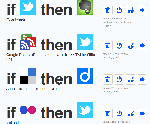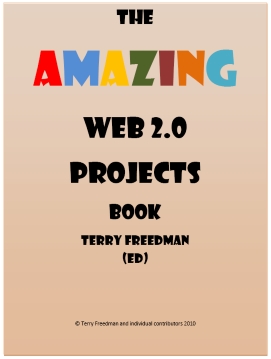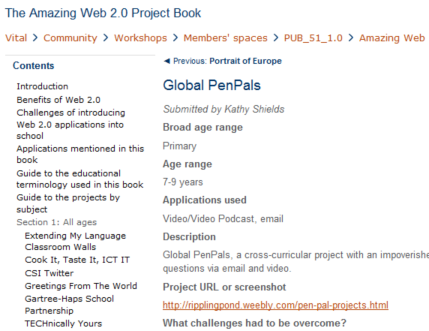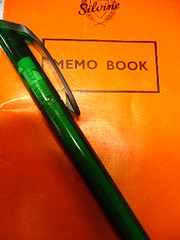How important is encouragement to Olympic class athletes? I’d like to start off with an admission of error….
Read MoreImage by OpenClipart-Vectors from Pixabay

Image by OpenClipart-Vectors from Pixabay
How important is encouragement to Olympic class athletes? I’d like to start off with an admission of error….
Read MoreAn old article about Web 2.0
Read More Here is an infographic that depicts what happens in an internet day. It goes through what happens in one second, one minute, one hour and then calculates the statistics for a day.
Here is an infographic that depicts what happens in an internet day. It goes through what happens in one second, one minute, one hour and then calculates the statistics for a day.
It’s interesting, though not – in my opinion – for the statistics in themselves. If big numbers impress you, then you will be impressed. Indeed, those whose mission it is to promote so-called 21st century skills and to prove that the current education system cannot cope with the new reality tend to use statistics like this to prove their point.
 E-safety guru Simon Finch talks about why pupils should be allowed to use social media, why teachers should use it, e-safety and identity management.
E-safety guru Simon Finch talks about why pupils should be allowed to use social media, why teachers should use it, e-safety and identity management. Welcome to the fifth part of this mini-series, in which I consider lessons we might learn from sports and sports personalities which we can apply to educational ICT. How important is encouragement to Olympic class athletes? I’d like to start off with an admission of error….
Welcome to the fifth part of this mini-series, in which I consider lessons we might learn from sports and sports personalities which we can apply to educational ICT. How important is encouragement to Olympic class athletes? I’d like to start off with an admission of error….
 Independent e-Learning Consultant Rob Ellis gives some tips on how pupils can use search engines properly.
Independent e-Learning Consultant Rob Ellis gives some tips on how pupils can use search engines properly.
When Terry tweeted about his post ‘Using the right search engine’ I rather flippantly suggested that he’d be better off simply reordering the words in the title to read ‘Using the search engine right’.
Leaving aside the damage I’ve done to the English language with that there is a serious point here. Despite the prominence given to information literacy I’d say that, anecdotally, there is widespread agreement on its importance but little progress on organised adoption in schools.
 Here’s a web application that’s potentially very useful. IFTTT lets you create your own automated actions using a range of social networking tools. I’ve been messing around with it only for about an hour, so I haven’t thoroughly explored all it has to offer, but already I can see it will prove to have been an excellent investment in time.
Here’s a web application that’s potentially very useful. IFTTT lets you create your own automated actions using a range of social networking tools. I’ve been messing around with it only for about an hour, so I haven’t thoroughly explored all it has to offer, but already I can see it will prove to have been an excellent investment in time.
The logic of the way it works is as follows:
10 things I’ve learned in a year of blogging | JAMES MICHIE
Very useful post, which succinctly suggests 10 things to consider when blogging. I think the author, James Mitchie, should have added a #11: create list posts. These always go down well, as exemplified here!
Thanks to twitterers @zoeross19 and @largerama for mentioning it.
tags: blogging James Mitchie
 Back in August 2007 I wrote the following article about Twitter:
Back in August 2007 I wrote the following article about Twitter:
When Twitter first appeared on the scene, I thought it sounded like a complete waste of time.
But as more and people I respect started singing its praises, I thought I ought to give it a whirl.
That was a couple of months ago, and here are my conclusions.
 In case you haven’t heard of it, or just to remind you if you have, The Amazing Web 2.0 Projects Book contains:
In case you haven’t heard of it, or just to remind you if you have, The Amazing Web 2.0 Projects Book contains:
 Web 2.0 case studies, from classrooms around the world. Great examples of innovative practice, and an insight into hurdles encountered and how they were surmounted. And it's all free!
Web 2.0 case studies, from classrooms around the world. Great examples of innovative practice, and an insight into hurdles encountered and how they were surmounted. And it's all free!
As featured in the TES!
Find out all about the book from here. It’s free!
In case you already know about it, I have a confession:
And now for some up-to-date stats:
The Myebook version has been read 2,759 times.
The Slideshare version has been read 625 times.
The Scribd version has been read 586 times.
The YouPublish version has been read 14 times. (Come on, be fair: I only published it there properly last night, and I haven’t even told anyone about until now!)
It has been downloaded 15,143 times.
 The Amazing book.
The Amazing book.Since its publication in March 2010, the Amazing Web 2.0 projects book has been:
Read more about it here.
Download it by clicking on the link below:
Thanks to Nyree Scott, of the University of Canterbury, for pointing out an error to me: Year 1 is 5-6 year olds, not 6-7 year olds. Don't know how I came to make such a daft mistake, but it's all corrected now!
A couple of days ago I posted a short article about this free book, and where you can find it. There is now another location. Thanks to Peter Twining and his colleagues at OU Vital, it's now available online in HTML format (though you have to register -- free -- on the Vital website to access it).
Peter informs me that people can link to individual sections of the book within the vital community by copying the link for the section in question from the menu that is visible on the left of each page when you are looking at the book.
 The Amazing HTML version
The Amazing HTML versionAs far as I can ascertain, this was my very first blog post. (Not my very first online writing, which had been published around seven years earlier.)
The sad thing is that nothing has changed -- except for the fact that I now receive even more of these inane messages!
22:13 2002-05-22
 Make a note of thisToday I had a great email. It started: "Hi [firstname]," and then went on to tell me how this product could make me loads of money.
Make a note of thisToday I had a great email. It started: "Hi [firstname]," and then went on to tell me how this product could make me loads of money.
I should have thought the first step in making pots of money is to find out basic things like your target's name, and perhaps the second thing would be to make sure the mail-merge works.
That's one company that won't be getting my custom (along with all the others whose emails are automatically dumped in my Trash folder -- but that's another story!)
(c) Terry Freedman All Rights Reserved